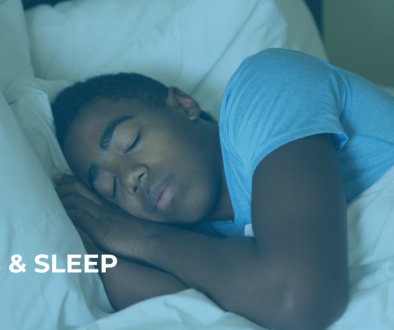Treatment of Depression in Adolescent Patients
By Saranga Bhalla, DO
According to recent research, rates of pediatric depression have increased from 8.7% to 11.3% between 2005-2014. Approximately 40% of pediatric patients with depression go untreated. Since major depression is more often identified in primary care settings and not by child psychiatrists or mental health specialists, knowledge about the treatment of adolescent depression is important for pediatricians.
Treatment of adolescent depression should always start with assessing safety. All patients with depression should be assessed for suicide risk and if a risk is identified, safety must be addressed by finding an appropriate setting for treatment. The next step should include educating the patient and family about depression. Examples include discussing the signs and symptoms of depression, the consequence of untreated depression, treatment options, pros and cons of the different treatments, and the duration of treatment. This helps reduce non-compliance and decreases risk of stigma. Parents can be referred to the American Academy of Child and Adolescent Psychiatry’s guide on antidepressants (https://www.aacap.org/App_Themes/AACAP/docs/resource_centers/resources/med_guides/DepressionGuide-web.pdf) for further education.
There are different phases of treatment. Response means significant reduction (>50%) of depressive symptoms during acute treatment. Rating scales should be used to monitor clinical improvement. An example is the Short Mood and Feelings Questionnaire, which is completed by the parent and patient. It is a validated questionnaire, is readily available in the public domain, and is brief and easy to use in a busy office setting. Scores >8 equates to clinical significance. It is important to note that this scale does not ask about suicide so it is always important to assess this separately. Remission is the period of time with minimal or no symptoms and no impairment in functioning. Relapse is the reemergence of the depressive episode during remission.
SMFQ Parent and Child Rating Scale
The goal of acute treatment is remission of symptoms and return to baseline functioning. There are 3 main treatment options: psychotherapy, pharmacotherapy, and the combination of psychotherapy and pharmacotherapy. Recommendations for treatment depend on the severity of the depression. Mild depression (few DSM V symptoms without significant impairment) should be treated with psychotherapy, such as cognitive behavioral therapy (CBT) or interpersonal therapy. Close monitoring is recommended and if no improvement in depressive symptoms is noted after 6-8 weeks of therapy, antidepressants should be considered.
The combination of therapy and antidepressants should be recommended for those adolescents with: moderate to severe depression; presence of agitation, psychosis, suicidal ideation, and/or homicidal ideation and behavior; or presence of a comorbidity such as anxiety or substance use disorders.
Randomized controlled trials of shown SSRIs are superior to placebo and Fluoxetine is considered the medication of choice for adolescent depression. There is more consistent, high-quality evidence for the efficacy of Fluoxetine than other antidepressants. However, there are reasons to start with a different SSRI other than Fluoxetine. Examples include the avoidance of certain side effects, a previous response to a different SSRI during an earlier major depressive episode, family history of response to a different SSRI, or potential drug-drug interactions with other prescribed medications.
Since approximately 30% of pediatric patients don’t respond to Fluoxetine, Sertraline would be the next treatment option. Escitalopram and Citalopram are also options. If third line treatment is necessary, recommendations for consultation with a child psychiatrist should be made.
Adolescents who remit with medication should be continued on this regimen for another 6-12 months. Otherwise, the risk of relapse is greater. Discontinuation of medication should be a collaborative process with the patient and family. Antidepressants should be gradually tapered by 25-50% per week to minimize discontinuation side effects. Education around the signs/symptoms of recurrence of depression should be provided to the patient and family.
Author Profile:

Saranga Bhalla, DO
Board-Certified Child & Adolescent, and Adult Psychiatrist
Princeton Mental Health, LLC.
REFERENCES:
Practice parameter for the assessment and treatment of children and adolescents with depressive disorders.
Birmaher B, Brent D, AACAP Work Group on Quality Issues, Bernet W, Bukstein O, Walter H, Benson RS, Chrisman A, Farchione T, Greenhill L, Hamilton J, Keable H, Kinlan J, Schoettle U, Stock S, Ptakowski KK, Medicus J J Am Acad Child Adolesc Psychiatry. 2007;46(11):1503.
National trends in the mental health care of children, adolescents, and adults by offi ce-based physicians. Olfson M, Blanco C, Wang S, Laje G, Correll CU JAMA Psychiatry. 2014 Jan;71(1):81-90.
Antidepressants in Children and Adolescents: Meta-Review of Effi cacy, Tolerability and Suicidality in Acute Treatment. Boaden K, Tomlinson A, Cortese S, Cipriani A Front Psychiatry. 2020;11:717. Epub 2020 Sep 2.
Receipt of Evidence-Based Pharmacotherapy and Psychotherapy Among Children and Adolescents With New Diagnoses of Depression. Soria-Saucedo R, Walter HJ, Cabral H, England MJ, Kazis LE Psychiatr Serv. 2016;67(3):316. Epub 2016 Jan 4.
UpToDate Liza Bonin, PhDC; Scott Moreland, DO
Antidepressants in paediatric depression: do not look back in anger but around in awareness. Brent DA, Gibbons RD, Wilkinson P, Dubicka B BJPsych Bull. 2018;42(1):1.
Clinical Practice Guideline for the Assessment and Treatment of Children and Adolescents With Major and Persistent Depressive Disorders Heather J. Walter, MD, MPH , A. Reese Abright, MD , Oscar G. Bukstein, MD, MPH , John Diamond, MD , Helene Keable, MD , Jane Ripperger-Suhler, MD , Carol Rockhill, MD, PhD, MPH




